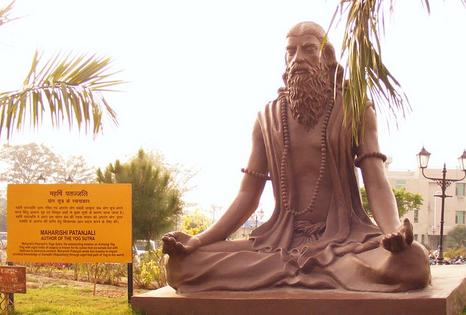Yoga: Modern research shows a variety of benefits to both body and mind from the ancient practice
Published in Women
The popularity of yoga has grown tremendously in the past decade. More than 10% of U.S. adults have practiced yoga at some point in their lives. Yoga practitioners on average spend on average US$90 a month, and the yoga industry is worth more than $80 billion worldwide.
Yoga is now a mainstream activity in the U.S. and is commonly portrayed as a healthy lifestyle choice. I am a behavioral scientist who researches how physical activity – and specifically yoga – can prevent and help manage chronic diseases.
Many people attribute improvements in their physical and mental health to their yoga practice. But until recently, research had been sparse on the health benefits of yoga. As the body of rigorous research on yoga grows, more and more work is showing the many health benefits of a yoga practice.
The name “yoga” is derived from the Sanskrit word “Yuj” meaning to unite, join or connect the mind, body and soul. The first text on yoga was written by the sage Patanjali over 2,000 years ago in India. Patanjali described yoga as “citta-vrtti-nirodhah,” or “stilling the mind.” This was achieved through a mix of breath work, meditation, physical movement and body purification practices, as well as ethical and moral codes for living a healthy and purposeful life.
Over the years, various yoga teachers have modified the original Patanjali yoga, resulting in different styles that vary in their intensity and focus. For example, some yoga styles such as Vinyasa focus more on intense movements similar to an aerobic workout. Restorative yoga includes more relaxation poses. Iyengar yoga uses props and emphasizes precision and proper alignment of body. These different styles provide options for individuals with different physical abilities.
Generally speaking, yoga instructors in the U.S. today teach styles that incorporate postures, breathing exercises and sometimes meditation.
As yoga has grown in popularity in recent years, researchers have begun to study its effects and are finding that it has great benefit for mental and physical health.
Yoga involves physical movement, so it is no surprise that most types of yoga can help to improve a person’s strength and flexibility. In one study with healthy untrained volunteers, researchers found that eight weeks of yoga improved muscular strength at the elbow and knee by 10%-30%. Flexibility at the ankle, shoulder and hip joints also increased by 13%-188%.
There are a number of less obvious but meaningful benefits from yoga as well. Research has shown that yoga practice can reduce risk factors for heart disease such as high blood pressure, high cholesterol and abdominal obesity. Studies on older adults have shown significant improvements in balance, mobility, cognitive function and overall quality of life.
Yoga seems to be effective at managing pain, too. Research has found that yoga can improve symptoms of headaches, osteoarthritis, neck pain and low-back pain. In fact, the American College of Physicians recommends yoga as one of the options for initial nonpharmaceutical treatment for chronic low-back pain.
Yoga also provides many benefits for mental health. Researchers have found that a regular practice over eight to 12 weeks can lead to moderate reductions in anxiety and depressive symptoms as well as help with stress management.
Yoga is a type of exercise in that it is a form of physical exertion that helps build fitness. A lot of the benefits researchers have found are due to the physical activity component and are similar to benefits from other forms of exercise like running, weightlifting or calisthenics.
But unlike these other activities, yoga practice incorporates mindfulness as a key aspect. With its focus on controlling breath, holding postures and meditation, yoga increases how much a person pays attention to the sensations of their body and the present moment. This mindfulness leads to many benefits not found from other forms of exercise.
Studies have shown that mindfulness training on its own can increase a person’s self-awareness, along with the ability to recognize and skillfully respond to emotional stress. It can even give a person greater control over long-term behavior. One study found that increased mindfulness from yoga can help people better recognize and respond to feelings of being full when eating, decrease binge eating and alleviate concerns over how their body looks.
My colleagues and I observed a similar effect in a pilot study on the benefits of yoga for individuals with Type 2 diabetes. After doing yoga twice a week for three months, several participants reported paying more attention to their diet, snacking less and eating healthier, even without any nutrition intervention. Our patients also reported less stress and an increased willingness to engage in other types of physical activities.
Yoga is clearly different from Western exercise in how it approaches mental health. With more research, it may be possible to understand the biological mechanisms as well.
Yoga may not be helpful for all medical conditions or right for every person, but people of all age groups, body types and physical abilities can practice yoga. It can be a form of mental and physical exercise for people who do not enjoy sweating during strenuous forms of exercise or for individuals with medical or physical conditions who find working out in the gym challenging.
It is important to consider that although yoga is generally safe, just as with any other form of exercise, there is some risk of getting injured. Individuals with medical conditions who are new to yoga should practice it initially under the supervision of a trained instructor.
If you do decide to give yoga a try, talk to the yoga instructor first to assess whether the style they offer meets your preference and fitness levels. Remember, you may need to practice a couple of weeks to feel the benefits, physically and mentally.
This article is republished from The Conversation, an independent nonprofit news site dedicated to sharing ideas from academic experts. The Conversation has a variety of fascinating free newsletters.
Read more:
Meditation and mindfulness offer an abundance of health benefits and may be as effective as medication for treating certain conditions
Yoga isn’t timeless: it’s changing to meet contemporary needs
Herpreet Thind receives funding from the National Institute of Health.






























Comments